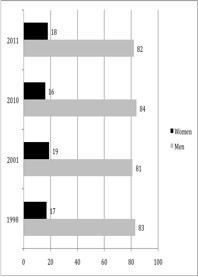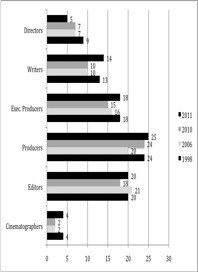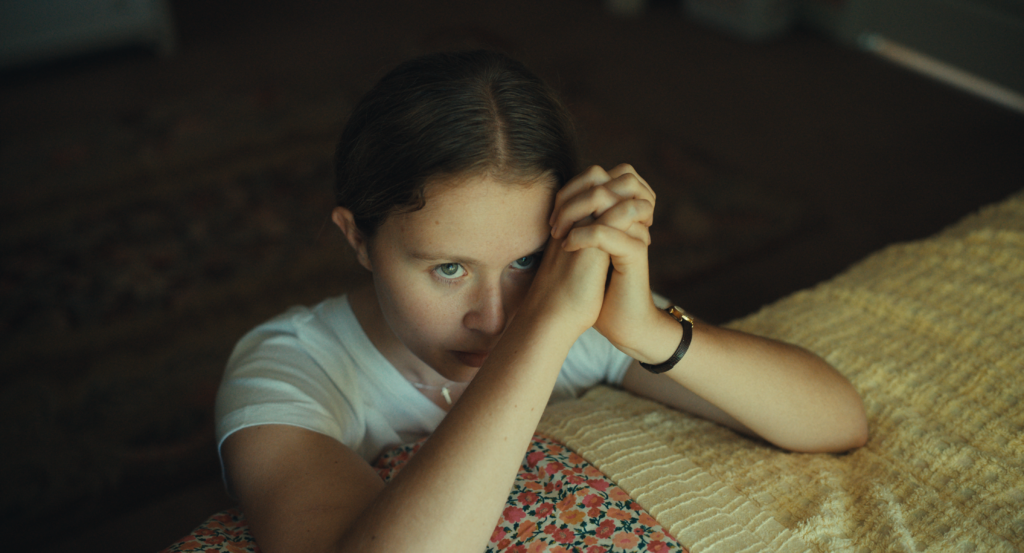The Oscar nominations this morning give us another year where there are no women directors included in the list. This year we won’t see Kathryn Bigelow up on the stage giving out the best director award to the next winner. When she won two years ago there was much hope that the numbers of women directing in Hollywood would get better.
You can’t really judge anything in year one because it takes so long to make films. But here we are in year two and the numbers have gone down. They didn’t even stay the same. They went down. Women make up 5 percent of directors in Hollywood in 2011. I find that a devestating number. Five percent. That’s down from 7 percent in 2010 and down from 7 percent in 2009. That’s down from 9 percent in 1998. Women made more movies as directors in 1998 than they did in 2011.
This is gut check time people.

People like to think that things are getting better and on the surface it may look like that. Women make up 18% of all behind the scenes roles in Hollywood. That’s up from 16% last year. But that is virtually the same amount as when these statistics started being tabulated in 1998. No progress overall in over a decade.
Sure, some of the numbers have improved. Cinematographers have gone up two points to 4 percent. Women writers to 14%. Women producers are at 25%. But none of these numbers have shown any significant improvement in over a decade.
Women’s progress in Hollywood is stalled and has been for a long time. Don’t believe the bullshit that things are better. it’s all smoke and mirrors. Something serious must be done.
As always, a big thanks for Dr. Martha Lauzen at SDSU for showing the reality on women’s progress or lack thereof in Hollywood.
The Full Executive Summary:
The Celluloid Ceiling: Behind-the-Scenes Employment of Women on the Top 250 Films of 2011
by Martha M. Lauzen, Ph.D.
Copyright © 2012 — All rights reserved.
In 2011, women comprised 18% of all directors, executive producers, producers, writers, cinematographers, and editors working on the top 250 domestic grossing films. This represents an increase of 2 percentage points from 2010 and an increase of 1 percentage point from 1998.
Women accounted for 5% of directors, a decrease of 2 percentage points from 2010 and approximately half the percentage of women directors working in 1998.
The following summary provides employment figures for 2011 and compares the most recent statistics with those from previous years.
Findings
This study analyzed behind-the-scenes employment of 2,636 individuals working on the top 250 domestic grossing films (foreign films omitted) of 2011.
- 38% of films employed 0 or 1 woman in the roles considered, 23% employed 2 women, 30% employed 3 to 5 women, and 7% employed 6 to 9 women.
- A historical comparison of women’s employment on the top 250 films in 2011 and 1998 reveals that the percentage of women directors has declined. The percentages of women writers and producers have increased slightly. The percentages of women executive producers, editors, and cinematographers have remained the same.
- Women comprised 5% of all directors working on the top 250 films of 2011. Ninety four percent (94%) of the films had no female directors.
- Women accounted for 14% of writers working on the top 250 films of 2011. Seventy seven percent (77%) of the films had no female writers.
- Women comprised 18% of all executive producers working on the top 250 films of 2011. Fifty nine percent (59%) of the films had no female executive producers.
- Women accounted for 25% of all producers working on the top 250 films of 2011. Thirty six percent (36%) of the films had no female producers.
- Women accounted for 20% of all editors working on the top 250 films of 2011. Seventy six percent (76%) of the films had no female editors.
- Women comprised 4% of all cinematographers working on the top 250 films of 2011. Ninety six percent (96%) of the films had no female cinematographers.
- Women were most likely to work in the documentary, drama, and comedy genres. They were least likely to work in the horror, action, and animated genres.
Report compiled by Dr. Martha M. Lauzen, Executive Director, Center for the Study of Women in Television and Film, School of Theatre, Television and Film, San Diego State University, San Diego, CA, 92182, 619.594.6301.







